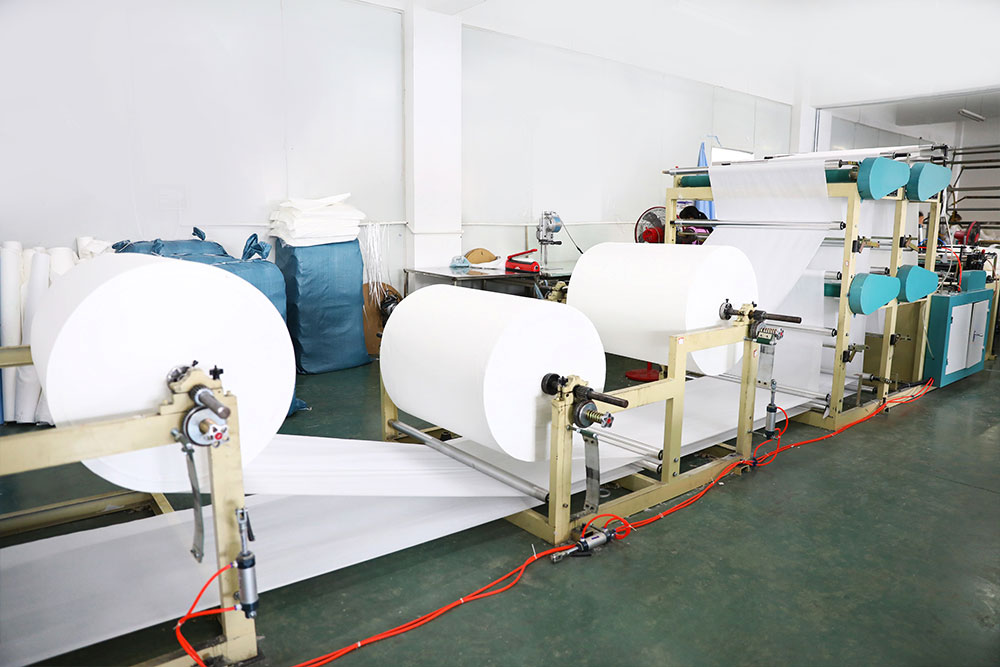+86 15967302471
zenazhang@shijie-nonwovens.com
Mon-Fri:8am-6pm
+86 15967302471
zenazhang@shijie-nonwovens.com
Mon-Fri:8am-6pm
In the past two years, despite the complex global situa […]
In the past two years, despite the complex global situation and economic development environment facing China’s industrial textiles and non-woven materials industries, due to the relatively stable demand in major markets and the insistence on innovation-oriented promotion of industry transformation and upgrading, the domestic and foreign markets have been fully explored. Still maintained stable development. Especially in 2020, which will be recorded in the annals of history, under the heavy pressure of the outbreak of the new crown epidemic, enterprises and institutions in the upstream and downstream of the industry have fully demonstrated their responsibilities and responsibilities, and they have also brought opportunities and responsibilities to enterprises in the industry chain of epidemic-related assets. challenge.
The proportion of my country's total industrial textile fiber processing in the textile industry has increased from 20% in 2010 to about 30% in 2019, ranking second in the three major end applications (clothing, industrial, household) in the textile industry. The industrial textile industry has become one of the most dynamic areas in my country’s industrial system. According to the United Nations, the total global textile fiber processing is expected to reach 253 million tons by 2050, of which the processing volume of industrial textiles will reach 170 million Tons, accounting for 67.4%, and there is huge room for future development.
As an important part of the new material industry, industrial textiles are not only widely used in civilian production, but also play an important role in national strategic security. They have become medical and health, safety protection, environmental protection, infrastructure construction, new energy, aviation Strategic supporting force in aerospace, national defense and military industries
1. Adjust the level of industrial textiles in the national economic statistical classification system, and enhance the strategic position of the industrial textiles industry
In the current "Classification of National Economic Industries" (GB/T 4754-2017), my country’s textile industry mainly involves three major categories, including the textile industry, textile clothing, apparel, and chemical fiber manufacturing. The manufacturing of industrial textile products is textile Medium category under the industry. The current classification system can no longer meet the urgent needs of the development of the industrial textile industry, and is particularly unfavorable for the country's information collection, production organization and deployment of industrial resources in emergency situations.
In order to adapt to the rapid growth trend of industrial textiles on a global scale, assist the development of my country's industrial textiles and many downstream emerging strategic industries, and improve the emergency mobilization system of the industrial textile industry, it is recommended that relevant departments revise the "National Economic Industry Classification" standards in a timely manner , To upgrade the manufacturing of industrial textile products, and establish four parallel categories: textile industry, textile clothing, apparel industry, chemical fiber manufacturing industry, and industrial textile manufacturing industry.
2. Establish the National Technical Committee for Standardization of Industrial Textiles to realize the overall management of the standardization of industrial textiles
Industrial textile standards have played a very important technical support role in previous public health incidents, natural disaster management and prevention, and provided an important basis for enterprise production and application department procurement. The Technical Subcommittee for Industrial Use of the National Textile Standardization Technical Committee not only undertakes the domestic and international standardization work in the field of industrial textiles, but also undertakes the management of national military standards in the textile industry. Its organizational form and industry are related to national public safety and emergency The inconsistency in the important role of guarantees is not conducive to specialized and systematic operation and management, is not conducive to the coordination and communication between upstream and downstream of the industrial chain, and between industries, and restricts the construction of industry standardization system and the improvement of technical level.
It is recommended to establish a National Technical Committee for Standardization of Industrial Textiles, strengthen the standardization management functions of the industrial textiles industry, form a cross-departmental coordination mechanism through standardization, and mobilize more resources to serve environmental protection, emergency emergencies, safety protection, medical and healthcare Promote the seamless connection of upstream and downstream standards in the industrial chain and the improvement of supporting policies in areas such as industrial textiles, and realize the overall management and quality supervision of industrial textile standardization.
3. Improve the national emergency reserve mechanism for masks and medical protective clothing, and improve the supply guarantee capacity under emergency conditions
During the prevention and control of the new crown pneumonia epidemic, especially at the beginning of the epidemic, the existing emergency reserve model of masks and medical protective clothing exposed some shortcomings and deficiencies. Improving the national emergency reserve mechanism for masks and medical protective clothing, and replenishing the imperfect parts of the system, is of great significance to effectively and quickly responding to outbreaks of the epidemic and protecting people's lives and health.
It is recommended that government departments improve the types, scale, timeliness and other standards of reserves, and form a central, local and key enterprise tiered reserve system; establish and improve a designated production system for masks and medical protective clothing to guide social resources to invest in material reserves and production; encourage enterprises and social organizations to reserve Emergency supplies, and a certain amount of financial subsidies for some idle production capacity (equipment) after the epidemic has passed, so as to improve the supply guarantee capacity of masks and medical protective clothing in emergency situations.
https://www.shijie-nonwovens.com

contact us
product penter
Mobile terminal
